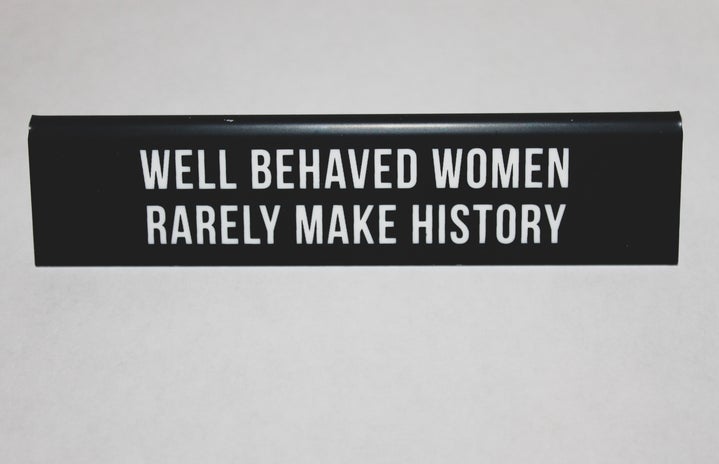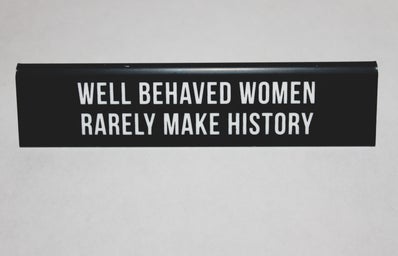Every year on March 8th, women’s achievements are celebrated in a day of empowerment, advocacy, and activism. Here’s what you need to know about the history of IWD, and this year’s theme: #PressForProgress.
International Women’s Day has been observed for just over a century, ever since booming populations and the rise of unrest among women in the 1900’s sparked the beginning of a global movement to work towards gender parity. Here’s a timeline of some of the monumental moments that have led up to IWD 2018.
In 1908, 15,000 women took to the streets of New York City to march in demand for better working conditions such as shorter hours and better pay, as well as their right to vote. This was followed by a 1909 declaration by the Socialist Party of America establishing the very first National Women’s Day for the United States of America, to be celebrated on February 28th – a date which all NWD celebrations followed until 1913. At the second International Conference of Working Women in Copenhagen 1910, Clara Zetkin introduced the concept of an International Women’s Day. Over 100 women from 17 countries at that conference approved the idea. And so, IWD was born.
1911 marked the first time that IWD was celebrated. Austria, Denmark, Germany, and Switzerland all participated on March 19th. It was at these IWD rallies that one million women and men joined together to campaign for women’s rights including their right to vote, to work in proper conditions, and to hold public office. In 1913, the celebrations began to happen on March 8th as women in Europe rallied against the war. This date was further solidified as IWD when Russian women went on a March 8th strike in 1917 for “Bread and Peace” in response to the war and won their right to vote.
Fast forward to the past few decades, the values of IWD have evolved. In 1975, the United Nations officially celebrated IWD for the first time and claimed March 8th as a day for Women’s rights and international peace. The UN also introduced the idea to come up with yearly themes for the event which reflected the current climate and purpose of the celebrations. The first, in 1996, was “Celebrating the past, Planning for the Future” followed by themes such as “Women and Human Rights”, “Empower Rural Women, End Poverty and Hunger” and “A Promise is a Promise – Time for Action to End Violence Against Women”.
By the dawn of the new millennium, IWD activity had hit a roadblock. Feminism was less of a popular topic and was in desperate need of a push. Thus, the IWD website was created in 2001 to bring the day back to life. The site established charity fundraising missions and year-round campaign frameworks. 2011 marked the 100 year anniversary since the first IWD in 1911. In that year, President Barack Obama made March “Women’s History Month”, Hillary Clinton started the 100 Women Initiative, and women in the United Kingdom marched across bridges to support international women’s charities. The anniversary also sparked a large support from various celebrities and businesses.
This brings us to 2018. Some people believe that we have no reason to fight for gender parity anymore since obviously, we aren’t facing the same struggles as the Suffragettes in the early 1900’s. However, the journey to equality is much more complex, and we still have a lot to fight for.
That’s why this year’s theme is #PressForProgress. An additional theme set by the United Nations is “Time is Now: Rural and Urban Activists Transforming Women’s Lives”. Not all women have the same access to education globally, violence against women is still a huge issue, and women are still not paid equally as men. The World Economic Forum’s 2017 Global Gender Gap Report states that at the current rate, it would take 217 years to close the economic gender gap, the worst it’s been since 2008. In fact, all four main pillars of the report (Health and Survival, Educational Attainment, Economic Opportunity and Political Empowerment) showed a widening of the gender gap: the first time it has shown that since the report’s first publication in 2006. Plus, WOC and LGBTQ+ women have not seen the same opportunities for equality as other women, and are often left out of the equation by those who use the doors opened to heterosexual white women as evidence that gender inequality no longer exists.
Recent global activism such as the #MeToo and #TimesUp movements have sparked a strong international momentum for working to close this gender gap. 2018 is the year of forwarding strides, and banding together to make progress. The IWD website has a list of all official IWD events happening around the globe, and everyone can join the conversation online using the themed hashtag #PressForProgress.
Most importantly, IWD celebrations of female accomplishment and the push for gender parity are not exclusive to women. Just like at the initial rallies of 1911, everyone is welcome and encouraged to help make a difference for the future of our world. As feminist, journalist, and activist Gloria Steinem stated, “The story of women’s struggle for equality belongs to no single feminist nor to any one organization but to the collective efforts of all who care about human rights.”
So on March 8th this year, no matter who you are, join the movement of International Women’s Day and help make 2018 a year of impact, achievement, and progress for ALL women.



